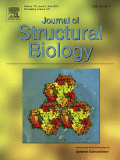
JOURNAL OF STRUCTURAL BIOLOGY
Scope & Guideline
Bridging the Gap Between Structure and Function
Introduction
Aims and Scopes
- Structural Biology Techniques and Methodologies:
The journal emphasizes the development and application of advanced techniques such as cryo-electron microscopy (Cryo-EM), X-ray crystallography, and nuclear magnetic resonance (NMR) to elucidate the structures of proteins, nucleic acids, and complexes. - Molecular Interactions and Dynamics:
Research on the dynamics of molecular interactions, including protein-protein, protein-nucleic acid, and protein-ligand interactions, is a core focus. The journal publishes studies that explore these interactions at atomic resolution, shedding light on their functional implications. - Biomolecular Engineering and Design:
The journal supports research that involves engineering biomolecules for specific functions, including drug design, synthetic biology, and the development of therapeutic agents targeting diseases. - Biomineralization and Structural Adaptations:
A significant area of interest is the study of biomineralization processes and the structural adaptations in various organisms, providing insights into evolutionary biology and materials science. - Computational Structural Biology:
The journal also covers the integration of computational methods with experimental approaches to predict and analyze the structures and dynamics of biomolecules, offering a holistic view of structural biology.
Trending and Emerging
- Cryo-Electron Microscopy (Cryo-EM) Advances:
Cryo-EM has emerged as a leading technique in structural biology, with a significant uptick in studies utilizing this method to uncover the structures of large and complex biological assemblies, particularly in the context of disease-related proteins. - Integrative Structural Biology:
There is a growing trend towards integrative approaches that combine multiple structural biology techniques (e.g., X-ray crystallography, NMR, and Cryo-EM) with computational modeling to provide a more comprehensive understanding of biomolecular structures and dynamics. - Protein Dynamics and Flexibility:
Research focusing on the dynamic aspects of protein structures, including conformational changes and flexibility, is gaining traction, reflecting a broader understanding that structure-function relationships are often dynamic rather than static. - Artificial Intelligence and Machine Learning in Structural Biology:
The application of AI and machine learning techniques to analyze structural data and predict biomolecular interactions is rapidly emerging, with many studies exploring these innovative methodologies to enhance structural biology research. - Biomolecular Design and Engineering:
An increase in the exploration of designed biomolecules and engineered proteins for therapeutic applications is evident, emphasizing the journal's commitment to bridging structural biology with biomedical advancements.
Declining or Waning
- Classical Structural Biology Techniques:
There appears to be a waning interest in classical structural biology methods, such as traditional X-ray crystallography, particularly as newer technologies like cryo-EM gain favor due to their ability to study larger complexes and dynamic states. - Studies on Static Structures:
Research focusing solely on static structural analysis without considering dynamics or functional implications is becoming less prevalent, as the field increasingly values the understanding of molecular flexibility and interaction dynamics. - Basic Biomolecular Characterization:
There is a noticeable reduction in publications that focus on basic characterization of biomolecules without integrating structural insights or functional analyses, as the field moves towards more application-driven research. - In-vitro Models for Structural Studies:
Research utilizing simple in-vitro models for structural studies seems to be declining, as there is a growing emphasis on using more complex biological systems that better represent physiological conditions.
Similar Journals
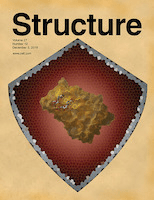
STRUCTURE
Fostering groundbreaking insights into molecular mechanisms.STRUCTURE is a premier academic journal published by CELL PRESS, dedicated to advancing the field of structural biology and molecular biology since its inception in 1993. With an impressive reputation, it is recognized as a Q1 journal in both Molecular Biology and Structural Biology categories, reflecting its high impact within the academic community. The journal holds a significant position in Scopus rankings, placing 10th among 49 in Structural Biology and 100th among 410 in Molecular Biology, marking it as a key resource with a strong influence on ongoing research. Researchers and professionals alike will find STRUCTURE an invaluable platform for disseminating cutting-edge findings related to protein structure, dynamics, and interactions, fostering insights that can lead to groundbreaking applications in medicine and biotechnology. Although the journal follows a traditional subscription model, it continues to attract a diverse array of submissions, ensuring a vibrant exchange of knowledge in the ever-evolving landscape of structural and molecular biology. Access to its content can enhance the understanding of intricate biological mechanisms, making it essential reading for experts, students, and anyone passionate about the molecular underpinnings of life.

QUARTERLY REVIEWS OF BIOPHYSICS
Advancing the frontiers of biophysics research.Quarterly Reviews of Biophysics, published by Cambridge University Press, is a premier academic journal dedicated to the field of biophysics. With an impressive impact factor reflecting its esteemed reputation, this journal occupies a distinguished position as evidenced by its Q1 category ranking in Biophysics and its ranking of #7 out of 152 in the Scopus database, placing it in the top 5% of its field. The journal has been a significant contributor to the scientific community since its inception in 1968, offering insightful reviews and analysis that bridge the disciplines of biochemistry, genetics, and molecular biology. Quarterly Reviews of Biophysics provides an invaluable platform for researchers, professionals, and students alike to access high-quality, peer-reviewed content that enhances understanding of molecular interactions and systems biology. While Open Access is not currently offered, the journal remains committed to disseminating critical knowledge to advance research and innovation in biophysics.
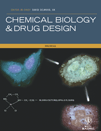
Chemical Biology & Drug Design
Bridging theory and practice in chemical biology and pharmacology.Chemical Biology & Drug Design, an esteemed publication by WILEY, serves as a vital platform for the dissemination of pioneering research in the interdisciplinary fields of biochemistry, drug discovery, molecular medicine, organic chemistry, and pharmacology. With a dedicated commitment to advancing the understanding of chemical interactions and drug development, this journal not only fosters innovation but also bridges the gap between theoretical research and practical applications. It boasts an impressive impact factor and is recognized in the 2023 category quartiles as Q3 in Biochemistry and Molecular Medicine, and Q2 in Drug Discovery, Organic Chemistry, and Pharmacology, indicating its relevance and influence in these crucial areas. The journal’s rankings across various Scopus categories further solidify its position as a reputable resource for researchers, professionals, and students striving to stay at the forefront of medicinal chemistry and drug design. While primarily traditional access-based, the journal's evolving scope from 2006 to 2024 ensures an ongoing contribution to essential scientific dialogue, making it an indispensable read for those committed to advancing health sciences.

FEBS Open Bio
Unlocking the potential of open-access scientific discovery.FEBS Open Bio is a leading open-access journal published by Wiley, dedicated to advancing our understanding of biochemistry, genetics, and molecular biology. Since its inception in 2011, this journal has provided a robust platform for researchers to share their findings with a wider audience, ensuring the dissemination of high-quality scientific knowledge. With an impact factor reflecting its stature in its field, FEBS Open Bio is ranked #77 out of 221 in general biochemistry, genetics, and molecular biology, placing it in the 65th percentile among its peers. This journal serves as an essential resource for professionals, researchers, and students alike, fostering collaboration and innovation within the scientific community. The commitment to open access not only enhances visibility but also promotes transparency in research, making it a vital contributor to the ongoing dialogue in biochemical and molecular biological sciences. For those looking to stay at the forefront of research developments, FEBS Open Bio is a key publication addressing the latest trends and discoveries in the field.

Structural Dynamics-US
Advancing the frontiers of structural dynamics research.Structural Dynamics-US, published by AIP Publishing, stands as a premier journal within the fields of Condensed Matter Physics, Instrumentation, Radiation, and Spectroscopy. Established in 2014 and operating under an Open Access model, this journal facilitates a broad dissemination of groundbreaking research, enabling researchers and professionals worldwide to contribute to and engage with cutting-edge developments in structural dynamics. With a significant impact highlighted by its Q1 Quartile rankings across multiple categories, and impressive Scopus rankings—including a noteworthy 13th place in Radiation—Structural Dynamics-US provides a vital platform for scholarly communication and innovation in scientific inquiry. The journal's commitment to accessibility and excellence underscores its role as a critical resource for researchers, academics, and students eager to advance their understanding and application of structural dynamics in various scientific contexts.
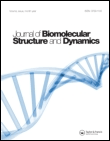
JOURNAL OF BIOMOLECULAR STRUCTURE & DYNAMICS
Exploring the Intricacies of Biomolecular DynamicsJOURNAL OF BIOMOLECULAR STRUCTURE & DYNAMICS, published by TAYLOR & FRANCIS INC, serves as a pivotal platform for the dissemination of original research in the fields of biochemistry, molecular biology, and structural biology. With an ISSN of 0739-1102 and an E-ISSN of 1538-0254, this esteemed journal has garnered attention for its rigorous peer-review process and commitment to high-quality scientific inquiry since its inception in 1981. Ranking in the Q2 quartile for miscellaneous medicine and the Q3 quartile for both molecular and structural biology, it consistently demonstrates a significant impact within its specialties, evidenced by a high Scopus ranking. Researchers, professionals, and students are encouraged to engage with cutting-edge studies addressing the complex interactions and dynamics of biomolecules, making this journal a vital resource for advancing knowledge in the biological sciences. Although it does not offer open access options, its valuable contributions are vital for the ongoing discourse within the scientific community.

Journal of Biochemistry
Connecting discoveries in biochemistry, molecular biology, and medicine.Journal of Biochemistry, published by Oxford University Press, is a prestigious academic journal that has been at the forefront of biochemical research since its inception in 1922. With an ISSN of 0021-924X and an E-ISSN of 1756-2651, this journal serves as a platform for disseminating high-quality research in the fields of biochemistry, molecular biology, and medicine, holding impressive rankings such as Q2 in Biochemistry and Medicine (miscellaneous) in 2023. As of 2024, the journal continues to explore significant topics in these areas, offering valuable insights for researchers, professionals, and students alike. The journal does not currently offer open access, but it remains a vital resource for anyone in the biochemical community seeking to stay updated on the latest discoveries and advancements. With its rich history and dedication to scientific excellence, the Journal of Biochemistry is an indispensable part of the scholarly landscape.
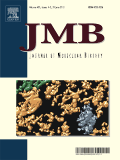
JOURNAL OF MOLECULAR BIOLOGY
Transforming Ideas into Molecular BreakthroughsThe Journal of Molecular Biology (ISSN: 0022-2836, E-ISSN: 1089-8638), published by Academic Press Ltd - Elsevier Science Ltd, stands as a premier platform for disseminating significant advancements in the field of molecular biology. With a distinguished history of publication spanning from 1959 to 2024, this journal is recognized for its high-quality, peer-reviewed articles that engage with transformative research in biophysics, structural biology, and molecular biology. The journal holds an impressive Q1 category ranking across these disciplines in 2023, affirming its impact and relevance within the scientific community. Notably, it ranks #11 in biophysics and #5 in structural biology based on Scopus metrics, placing it in the 93rd and 90th percentiles, respectively. As an essential resource for researchers, professionals, and students alike, the Journal of Molecular Biology serves as a vital conduit for the exchange of innovative ideas and discoveries, fostering a deeper understanding of life's molecular underpinnings.

Biophysical Reviews
Connecting Research and Innovation in Biophysical StudiesBiophysical Reviews, published by SpringerNature, is a leading international journal focused on the interdisciplinary areas of biophysics, structural biology, and molecular biology. With an impressive 2023 impact factor, the journal ranks in the Q1 category for biophysics and is also highly regarded in structural and molecular biology, reflecting its commitment to advancing understanding in these critical fields. Operating since 2009 and converging toward its goal of comprehensive coverage by 2024, Biophysical Reviews provides a platform for researchers to share innovative insights and critical reviews that shape the future of biophysical sciences. Its rigorous peer-review process ensures high-quality publications that are closely monitored within the academic community, making it an essential resource for researchers, professionals, and students aiming to stay at the forefront of biophysical research. Access options are available for enhancing the dissemination of knowledge, supporting a broad audience dedicated to scientific excellence.

BIOPHYSICAL CHEMISTRY
Exploring molecular interactions that shape our understanding of life.BIOPHYSICAL CHEMISTRY, published by Elsevier, is a prestigious journal with a long-standing tradition since its inception in 1973. This highly respected journal focuses on the intersections of biochemistry, biophysics, and organic chemistry, providing a critical platform for researchers, professionals, and students to disseminate pivotal findings in these dynamic fields. With an impressive impact factor that reflects its robust academic influence and high citation rates, it ranks within the Q2 quartile among its peers in multiple categories, indicating its significance in the scholarly community. The journal, hosted in the Netherlands, encompasses a diverse range of topics, from molecular interactions to protein folding, and serves as an essential resource for those engaged in cutting-edge research. Researchers looking to share their work with a global audience will find BIOPHYSICAL CHEMISTRY an invaluable outlet, fostering the advancement of knowledge in this crucial area of science. For more information, visit the journal's page on the Elsevier platform.